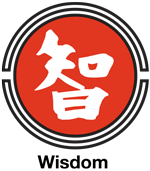(THE NEW POPULARITY EXPLOSION OF CHINESE HERBS)
The year was 197 A.D. , the famed physician Chang Chung-Ching had just completed his diagnostic routine of the patient which consisted of a thorough case history, careful observation of the patients tongue, demeanor and general physical constitution to include complexion, nails, lips, eyes and physique. The 12 pulses were observed for their 28 specific characteristics in trance like reverence. The abdomen was palpated with the same dedication as the pulse and the respected doctor listened to both the patients voice quality and respiration along with smelling for any peculiar odor emitted from either breath or body. The entire case history and examination lasted close to two hours.
Once the diagnosis was made, a course of treatment was established which included acupuncture, manipulation and treatment through herbal remedies. Dr. Chang called for a special formulae which was known in ancient times and is known to this day, as Ma-Huang-Hsing-Jen-Kan-Tsao-Shih-Kao-Tang. The prescription was written and handed to his assistant who prepared the formulae by using:
4 liang…. .Ma-huang without nodes
50………. “Hsing – Jen” Apricot seed with outer skin and apexes removed
2 liang…. “Kan – Tsao” Licorice, seared
½ chin…. “Shih-Kao ” Gypsum ground and wrapped in a silk cloth
The patient was instructed to place the ma-huang in 7 sheng of water. Boil down to 5 sheng. Remove the white froth and then add the other herbs. Re-boil until only 2 sheng remain. Remove any sediment and take 1 sheng while warm.
The patients Western diagnosis was “bronchial asthma”
In another patient, the same rigorous diagnostic regime was undertaken this time, the ancient physician prescribed Pan-Hsia-Hsieh-Hsin-Tang. Which consists of:
½ sheng…. “Pan – Hsia” Pinellia, washed
3 liang……. “Huang – Ch ‘in ” Scute (skullcap), seared
3 liang……. “Sheng – Chiang” Ginger, seared
3 liang……. “Jen – Shen” or “Hsi – Yang – Shen” Ginseng, seared
3 liang……. “Kan – Tsao” or “Tiao – Tsao” Licorice, seared
1 liang……. “Huang – Lien” or “Chi – Lien” Coptis (goldenthread)
12…………. “Hung – Tsao” or “Ta – Tsao” Jujube (Date or Zizyphus), shredded
Place the seven herbs in 1 tou (10 liters) of water and boil down until 6 sheng (6 liters) remain. Remove the sediment and reduce the contents to 3 sheng by reboiling. Take
1 sheng (1 liter) three times a day.
The patients Western diagnosis was gastritis with weak digestion.
The scenario just described took place 1,800 years ago however little has changed in regard to either diagnosis or treatment with the exception that today, we are blessed with Chinese herbal pharmaceutical laboratories which manufacture the identical formulaes we just outlined, but in tablet form.
The benefits of modern technology preparing the ancient formulaes instead of us concocting the prescriptions ourselves are numerous, from time and difficulty of preparation, to the extremely offensive taste which we in the Western world find so disgusting. However, the most positive attribute to the utilization of Chinese herbs as manufactured by modern laboratories, is that they have absolutely incredibly effective clinical results, the likes of which can only be compared to ancient formulaes prepared by ancient physicians.
We are currently experiencing in the Western world an explosion of popularity of Ancient Chinese Herbal Prescriptions which have proven their merit for close to 2,000 years. Even though there are hundreds of formulae in Asian Healing, the following list are without question some of the most revered, historical and proven Traditional Chinese Medicine formulae in existence.
The manufacturer of these formulae are from the oldest most respected herbal medicine laboratory in the world with over 50 years of supplying all of China, Australia, Japan and the United States. I highly recommend and personally use these herbs. They are as easy to use as simply recognizing the symptomotolgy and recommending the appropriate formulae.
John A. Amaro D.C., FIAMA, Dipl.Ac. (NCCA)
Carefree, Arizona, USA
DrAmaro@IAMA.edu


